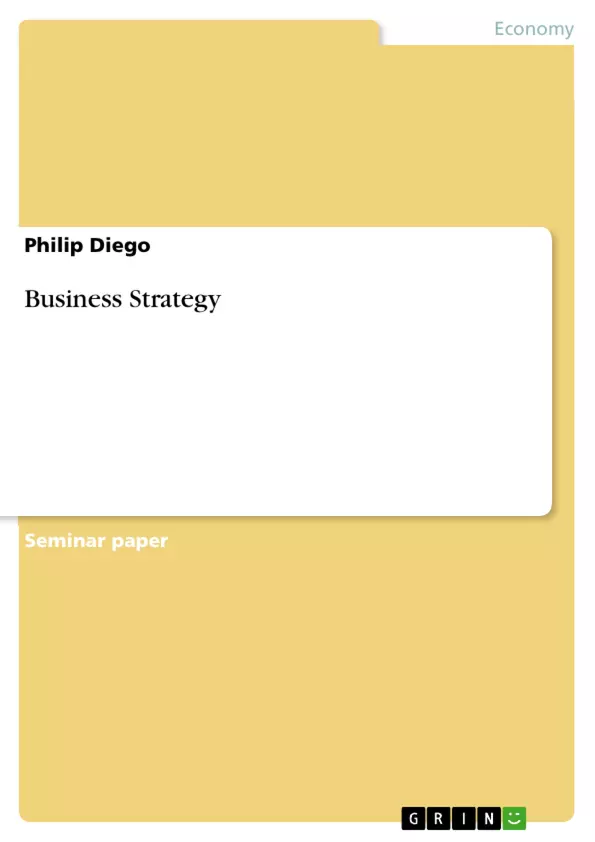Business strategy can be defined in various ways. According to the oxford dictionary, it is a plan designed for a particular purpose. It can also be viewed as the direction and scope of a company over a long span which translates into an advantage for it through its utilization of resources in a challenging market to meet its objectives. Bryson defines strategy as a pattern of purposes, policies, programmes, actions, or resource organization that clearly determine what an organization does, and why it does it. In all these definitions, there are some common strands of strategy that can be used to summarize what it is about. It is viewed as a long term activity which seeks to utilize resources available to position the organization in a competitive market situation. In essence it is a long term approach to implementing a company’s business plans in an already challenging business environment.
Inhaltsverzeichnis (Table of Contents)
- Business Strategy
- The Centrality of Strategy
- Competitive Business Strategy
- Blue Ocean Strategy
Zielsetzung und Themenschwerpunkte (Objectives and Key Themes)
This text explores the concept of business strategy, examining both traditional competitive strategies and the emerging "blue ocean" approach. It aims to provide a comprehensive understanding of how businesses can achieve sustainable profitability in a challenging market environment.
- Defining business strategy and its core elements
- Contrasting traditional competitive strategy with the blue ocean approach
- Analyzing the factors that contribute to competitive advantage
- Exploring the benefits and challenges of implementing blue ocean strategies
- Illustrating how businesses can combine elements of both approaches for success
Zusammenfassung der Kapitel (Chapter Summaries)
The text begins by defining business strategy, highlighting its long-term focus on resource utilization and positioning in a competitive market. It emphasizes the need for companies to adapt their approaches in the face of recent economic constraints.
The text then delves into the concept of competitive business strategy, outlining Porter's five forces framework. This framework analyzes factors such as the threat of new entrants, bargaining power of suppliers and buyers, and the threat of substitutes. The goal of competitive strategy is to overcome these forces through differentiation and value creation.
Finally, the text explores the emerging blue ocean strategy, which focuses on creating new market space rather than competing for existing demand. It highlights the importance of identifying and exploiting untapped opportunities and restructuring existing markets to achieve sustainable profitability. The text provides examples of how companies like Microsoft have successfully incorporated elements of both competitive and blue ocean strategies to maintain their success.
Schlüsselwörter (Keywords)
The primary focus of this text is on business strategy, exploring both traditional competitive strategies and the innovative blue ocean approach. Key themes include the centrality of strategy, competitive advantage, market analysis, resource utilization, sustainable profitability, and the creation of uncontested market space.
- Quote paper
- Philip Diego (Author), 2013, Business Strategy, Munich, GRIN Verlag, https://www.grin.com/document/271574



